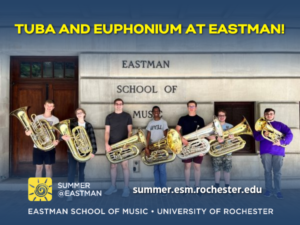The role of the euphonium in wind band literature has evolved during the 20th century. As Director of Bands and Professor of Euphonium and Tuba at Michigan State University (MSU), Leonard Falcone was also concerned with preserving the euphonium’s legacy as cello of the wind band. A prime example of how he promoted and featured the euphonium in his own arrangements and transcriptions for band is MSU’s Alma Mater, the MSU Shadows. Early/middle 20th century wind band composers such as Percy Grainger (pianist/ saxophonist), Robert Russell Bennett (violinist/trumpet player), Gustav Holst (violinist/pianist), and John Philip Sousa (violinist) wrote for and treated the euphonium exactly as Falcone described as the “cello of the band.” These composers created a rich heritage where the euphonium’s role had true independence, it was often featured soloistically, and it was frequently showcased with beautiful countermelodies when there was an opportunity. Any of the marches by John Philip Sousa, as well as either of Holst’s Suites for Military Band, can serve as fine examples demonstrating the sonic and technical capabilities of the euphonium. Several articles and dissertations have expressed a concern about and have explored the role of the euphonium in the wind band, including: Leonard Falcone, E. J. Robbins, Brian Bowman, Roger Behrend, David Werden, Robert Pennington Reifsnyder, John Clayton Metcalf, David Stern, Gretchen Renae Bowles, and Jeffrey Sands. Even though the demands on the euphonium’s technique and musicianship in solo literature has increased significantly through the years, in wind band literature from the mid-20th century to the present, the euphonium’s role has sadly diminished. Composers Vincent Persichetti (pianist), Karel Husa (violinist/ pianist), Frank Ticheli (trumpet player), and John Mackey (never formally studied an instrument) all treat the euphonium differently than that of the earlier wind band composers. In contrast, composers David Gillingham and James Curnow, who (like Falcone) played euphonium, have a personal applied knowledge of its sonic and technical capabilities. Not only do they write well for wind band, but they also are amongst the best creators of solo euphonium literature. As a result, their music frequently features the euphonium and provides more challenges in the modern wind band. The euphonium’s role began to diminish as early as 1921 as described in orchestration books such as Fidler’s, A Handbook of Orchestration, along with the Bassett Horn, the Ophicleide, the Serpent, and theSarrusophone, in a section of the book titled “Notes on some obsolete or rarely used instruments.”[1] Erroneous information frequently causes the role of the euphonium to be an “afterthought,” and as a result it is often given a much lesser role than it deserves. Another aspect to consider is that most of the early band literature was orchestral transcriptions where the “cello” part was easily reassigned to the euphonium. It is the author’s hope that this research will help to restore the euphonium’s legacy as “cello of the wind band” by inspiring composers to look beyond the euphonium’s role as derived from standard orchestration texts and seek expanded knowledge through collaborative experiences with euphonium artists when creating new works for wind band. [1] Florence G. Fidler, A Handbook of Orchestration, (London: K. Paul, Trench, Trubner, 1921).
Restoring the Euphonium’s Legacy As Cello of the Wind Band
Published year:
2019
Author:
Gail
Robertson
Author email:
oystein@baadsvik.com
Institution:
Michigan State University
Country of institution:
United States
Language:
English
Abstract URL:
Website URL:
Project PDF:
Description:

